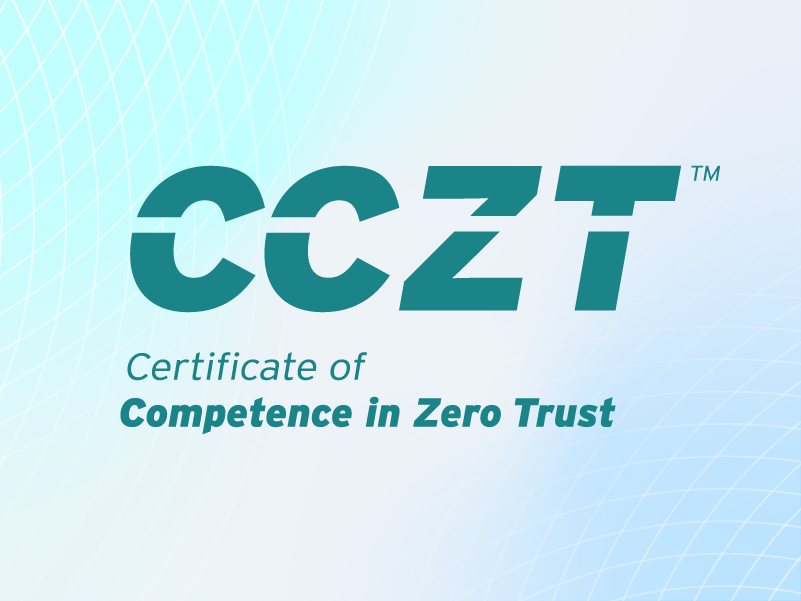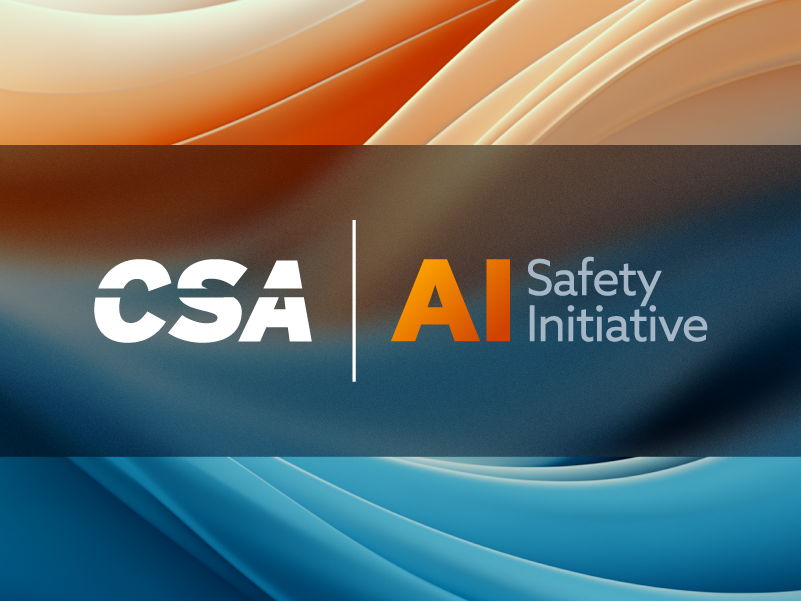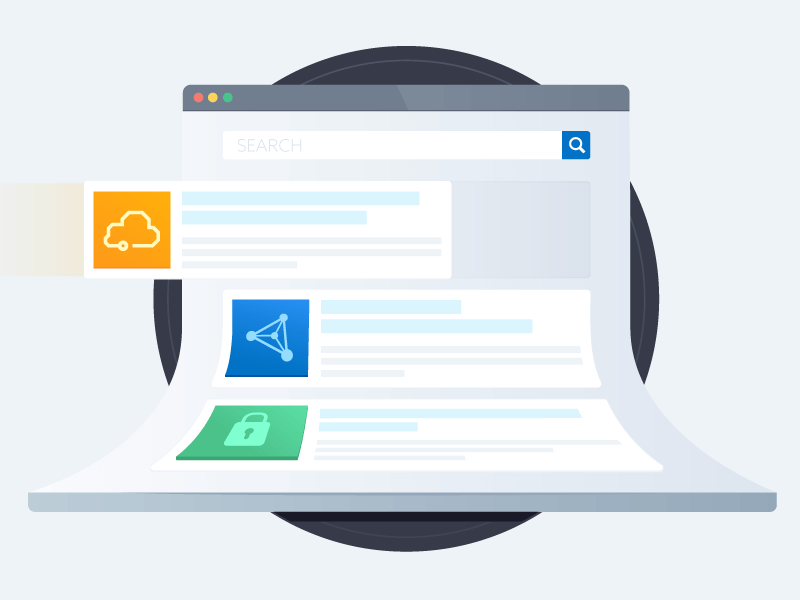Fortifying the Agentic Web: A Unified Zero Trust Architecture Against Logic-Layer Threats
Published 09/12/2025
Written by:
- Ken Huang, CSA Fellow, Co-Chair of CSA AI Safety Working Groups
- Hammad Atta Founder & AI Technology Advisor – Qorvexconsulting Research
- Dr. Zeeshan Baig – Global Partner, AI Threat Modeling & Security – Qorvexconsulting Research
- Dr. Yasir Mehmood –, AI 5G & IoT Systems Security
Introduction: The Rise of the Agentic Web
As autonomous AI agents evolve into the fundamental units of digital interaction, they are driving the emergence of the Agentic Web, a decentralized ecosystem of intelligent, self-operating systems. These agents promise efficiency, scalability, and automation across domains from finance to healthcare. Yet the same properties that make them powerful—persistent memory, reasoning autonomy, and adaptive collaboration—also expose them to unprecedented vulnerabilities.
Traditional Identity and Access Management (IAM) protocols such as OAuth, OIDC, and SAML were designed for human users and monolithic applications. They fall short in this new paradigm. Agentic systems operate with ephemeral delegation chains, multi-agent orchestration, and autonomous decision-making. These dynamics create fertile ground for logic-layer attacks threats that persist, propagate, and trigger beyond the scope of immediate interactions.
One such emerging class, Logic-layer Prompt Control Injection (LPCI), represents a paradigm shift in AI security. Unlike surface-level prompt injection, LPCI exploits an agent’s persistent memory and reasoning layers, embedding dormant malicious payloads that may activate weeks or months later. This architectural gap calls for a Zero-Trust model tailored to autonomous agents, providing continuous verification, layered controls, and resilience against adversaries.
The Growing Threat Landscape
AI agents introduce attack surfaces that span cognitive, temporal, and operational dimensions. Core risks include:
- Dormant Payloads: LPCI embeds malicious logic in memory, triggered only under specific conditions.
- Reasoning Manipulation: Long reasoning chains allow subtle logic drift, producing outcomes misaligned with intent.
- Multi-Agent Propagation: Compromise in one agent can cascade across networks through delegated authority.
- Identity Spoofing: Without robust attestation, adversaries can impersonate agents or hijack authority chains.
Frameworks such as DIRF (Digital Identity Rights Framework) and QSAF (Qorvex Security AI Framework) have exposed gaps in identity governance and reasoning stability. LPCI compounds these risks, demanding a formally verifiable architecture with dynamic trust and cross-agent visibility.
Zero-Trust IAM Foundations for Autonomous Agents
To address these risks, we propose a Zero-Trust IAM (Identity and Access Management) framework, designed specifically for agents operating in distributed ecosystems. Core principles include:
- Never Trust, Always Verify: Every interaction, regardless of context, requires authentication and authorization.
- Dynamic Agent Identity: Agents assume multiple roles, requiring context-aware Decentralized Identifiers (DIDs) and Verifiable Credentials (VCs).
- Continuous Monitoring: Trust is not static; behavioral and environmental factors constantly adjust privileges.
Key Components
- Verifiable Agent Identity – DIDs and VCs anchor agent identities cryptographically.
- Agent Name Service (ANS) – A universal, protocol-agnostic discovery system enabling capability-based lookups.
- Dynamic Access Control – Just-in-Time verifiable credentials restrict agents to minimal privileges.
- Trust Computation – Continuous scoring based on behavior, history, and compliance.
- Cryptographic Protocols – Mutual TLS, credential verification, and post-quantum readiness.
Together, these foundations establish a resilient identity and access layer for agent ecosystems.
The Multi-Layered Trust Fabric
Building upon Zero-Trust IAM, the Trust Fabric architecture operationalizes security across five integrated layers:
- Identity & Discovery – Capability-aware agent registration and trust-scored discovery.
- Composition & Access Control – Attribute-based rules and delegation chains, verifiable via VCs.
- Deployment & Enforcement – Unified session management, policy enforcement points, and runtime monitoring.
- Evaluation (Trust Engine) – Behavioral baselines, anomaly detection, and dynamic trust scores.
- Incentivization – Economic levers (micropayments, reputation-based pricing, security bonds) to promote compliance.
This defense-in-depth model ensures resilience even if one layer is bypassed.
Advanced Security Innovations
To counter LPCI and other adaptive threats, the architecture introduces four breakthrough mechanisms:
- Trust-Adaptive Runtime Environments (TARE) – Execution environments adjust strictness dynamically based on trust scores, with ephemeral Just-in-Time environments to prevent memory persistence.
- Causal Chain Auditing – Immutable DID-anchored provenance records and DAG-based causal analysis detect multi-step, long-term attacks.
- Dynamic Identity & Behavioral Attestation – Behavioral biometrics provide continuous authentication beyond cryptographic keys.
- Quantum-Resistant Cryptography – Hybrid identity and credential systems prepare for post-quantum adversaries.
These innovations move beyond static defenses, offering adaptive containment, traceability, and resilience.
Validation and Evaluation
Formal security proofs demonstrate that the probability of a successful LPCI attack is exponentially reduced by layered detection. Testing via the LPCI-Fuzz adversarial framework confirmed:
- Attack persistence reduced to <1 session with Just-in-Time runtime isolation.
- Trigger evasion rates <5% with causal chain auditing.
- Trust convergence ensuring long-term behavioral equilibrium.
Monte Carlo simulations and prototype implementations validated scalability, showing support for millions of agents with manageable overhead.
Real-World Applications
- Enterprise Agent Networks – Prevent unauthorized logic drift in cross-departmental AI orchestration.
- Financial Agents – Enforce non-repudiation and traceability in high-value transactions.
- Healthcare Assistants – Apply continuous attestation and compliance-linked credentials for HIPAA/PII-sensitive contexts.
Roadmap for Implementation
Adoption can proceed in phases:
- Short-Term: Deploy verifiable DIDs/VCs, integrate ANS for discovery, and enforce JIT credentials.
- Medium-Term: Implement TARE runtime isolation and causal chain auditing in production.
- Long-Term: Transition to quantum-resistant identity anchors and federated threat telemetry for collective defense.
Conclusion: Securing the Agentic Web
The Agentic Web represents the next frontier of digital ecosystems but without robust safeguards, it risks becoming a vector for dormant, logic-layer attacks. The proposed Zero-Trust IAM framework and Trust Fabric architecture provide a rigorous foundation for resilience, formally addressing LPCI while enabling innovation at scale.
By aligning with standards such as CSA MAESTRO and integrating identity governance principles from DIRF and reasoning stability controls from QSAF, this model ensures trustworthy, secure, and ethical AI ecosystems.
About the Authors
Ken Huang
Ken Huang is a prolific author and renowned expert in AI and Web3, with numerous published books spanning AI and Web3 business and technical guides and cutting-edge research. As Co-Chair of the AI Safety Working Groups at the Cloud Security Alliance, and Co-Chair of AI STR Working Group at World Digital Technology Academy under the UN Framework, he's at the forefront of shaping AI governance and security standards. Huang also serves as CEO and Chief AI Officer (CAIO) of DistributedApps.ai, specializing in Generative AI related training and consulting. His expertise is further showcased in his role as a core contributor to OWASP's Top 10 Risks for LLM Applications and his active involvement in the NIST Generative AI Public Working Group in the past. His books include:
- “Agentic AI: Theories and Practices” (upcoming, Springer, August, 2025)
- "Beyond AI: ChatGPT, Web3, and the Business Landscape of Tomorrow" (Springer, 2023) - Strategic insights on AI and Web3's business impact.
- "Generative AI Security: Theories and Practices" (Springer, 2024) - A comprehensive guide on securing generative AI systems
- "Practical Guide for AI Engineers" (Volumes 1 and 2 by DistributedApps.ai, 2024) - Essential resources for AI and ML Engineers
- "The Handbook for Chief AI Officers: Leading the AI Revolution in Business" (DistributedApps.ai, 2024) - Practical guide for CAIO in small or big organizations.
- "Web3: Blockchain, the New Economy, and the Self-Sovereign Internet" (Cambridge University Press, 2024) - Examining the convergence of AI, blockchain, IoT, and emerging technologies
- His co-authored book on "Blockchain and Web3: Building the Cryptocurrency, Privacy, and Security Foundations of the Metaverse" (Wiley, 2023) has been recognized as a must-read by TechTarget in both 2023 and 2024.
A globally sought-after speaker, Ken has presented at prestigious events including Davos WEF, ACM, IEEE, RSA, ISC2, CSA AI Summit, IEEE, ACM, Depository Trust & Clearing Corporation, and World Bank conferences.
Ken Huang is a member of OpenAI Forum to help advance its mission to foster collaboration and discussion among domain experts and students regarding the development and implications of AI.
Hammad Atta
Hammad Atta is a cybersecurity and AI security expert with over 14 years of experience in enterprise cybersecurity, compliance, and AI governance. As Founder and Partner at Qorvex Consulting, he has pioneered multiple AI security frameworks, including the Qorvex Security AI Framework (QSAF), Logic-layer Prompt Control Injection (LPCI) methodology, and the Digital Identity Rights Framework (DIRF).
Hammad’s research has been published on arXiv, integrated into enterprise security audits, and aligned with global standards such as ISO/IEC 42001, NIST AI RMF, and CSA MAESTRO. He is an active contributor to the Cloud Security Alliance (CSA) AI working groups and a thought leader on agentic AI system security, AI-driven risk assessments, and digital identity governance.
Hammad is also leading the Cybersecurity Consulting & Advisory Services at Roshan Consulting. He has conducted extensive work in Vulnerability Assessment & Penetration Testing (VAPT), risk modeling for LLMs, and adversarial AI testing, serving clients in cloud, industrial, and government sectors.
Hammad has also been a trainer, delivering executive workshops on AI governance, cyber resilience, and ISO 42001 certification. His current focus is on advancing ethical and secure AI adoption through standardization, research, and cross-border collaboration with academic and industry partner.
Dr. Yasir Mehmood
Act as the lead advisor for all AI & IoT systems security research efforts, focusing on protecting intelligent devices, industrial systems, and cloud-connected environments from emerging agentic AI threats.
Publications & Research Contribution
Dr. Mehmood is a co-author of pioneering AI and IoT security publications, including:
- Fortifying the Agentic Web: A Unified Zero-Trust Architecture Against Logic-layer Threats (arXiv:2508.12259)
- DIRF: A Framework for Digital Identity Protection and Clone Governance in Agentic AI Systems (arXiv:2508.01997)
- QSAF: A Novel Mitigation Framework for Cognitive Degradation in Agentic AI (arXiv:2507.15330)
- Logic-layer Prompt Control Injection (LPCI): A Novel Security Vulnerability Class in Agentic Systems (arXiv:2507.10457)
Dr. Mehmood is a co-author of pioneering AI and IoT security publications, including:
- Fortifying the Agentic Web: A Unified Zero-Trust Architecture Against Logic-layer Threats (arXiv:2508.12259)
- DIRF: A Framework for Digital Identity Protection and Clone Governance in Agentic AI Systems (arXiv:2508.01997)
- QSAF: A Novel Mitigation Framework for Cognitive Degradation in Agentic AI (arXiv:2507.15330)
- Logic-layer Prompt Control Injection (LPCI): A Novel Security Vulnerability Class in Agentic Systems (arXiv:2507.10457)
Dr. Muhammad Zeeshan Baig
Act as the lead advisor for all AI security research efforts, driving advancements in vulnerability analysis, cognitive resilience, and agentic system protection.
Provide strategic consulting to clients on implementing secure AI systems, with a focus on the QSAF (Qorvex Security AI Framework), including prompt injection defense, memory-layer controls, and model risk auditing.
Oversee client onboarding and technical assessments for AI security engagements, ensuring full lifecycle support from initial risk evaluation to final compliance validation.
Lead Qorvex’s participation in government-backed and cross-border AI security initiatives, including proposal development, project execution, and regulatory alignment.
Manage the full cycle of government project execution, from application writing to project delivery, reporting, and audit readiness.
Publications & Research Contributions
Dr. Baig is a co-author of several foundational AI security publications that are shaping the field of agentic AI protection:
- Fortifying the Agentic Web: A Unified Zero-Trust Architecture Against Logic-layer Threats (arXiv:2508.12259)
- DIRF: A Framework for Digital Identity Protection and Clone Governance in Agentic AI Systems (arXiv:2508.01997)
- QSAF: A Novel Mitigation Framework for Cognitive Degradation in Agentic AI (arXiv:2507.15330)
Acknowledgments
The author would like to thank Jerry Huang, Sree Bhargavi Balija for their contributions, peer reviews, and collaboration in the development of A Unified Zero-Trust Architecture Against Logic-layer Threats and co-authoring the associated research, published on arXiv: https://arxiv.org/pdf/2508.12259
Related Resources



Unlock Cloud Security Insights
Subscribe to our newsletter for the latest expert trends and updates
Related Articles:
AAGATE: A NIST AI RMF-Aligned Governance Platform for Agentic AI
Published: 12/22/2025
Is Cloud-Native Key Management Right for You?
Published: 12/19/2025


.png)
.jpeg)
.jpeg)
.jpeg)
